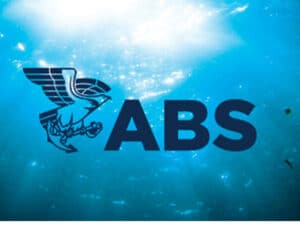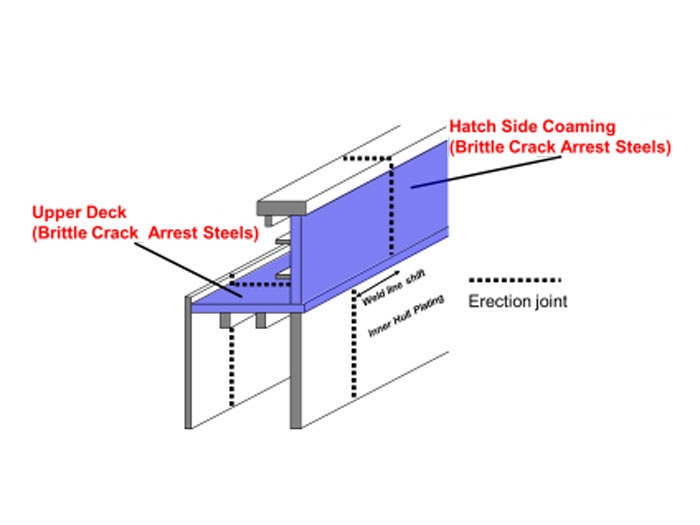
ClassNK works to lessen brittle crack risk in big box ships
Written by Nick Blenkey
Brittle crack arrest design steel for use on the upper deck and hatch side coaming
FEBRUARY 19, 2015 — Classification society ClassNK is to carry out a joint research project aimed at improving safety standards for ultra-large containerships.
As containerships increase in size, so too does the thickness of the steel used by shipbuilders. Preventative measures against brittle fracture become even more important with thicker steel, especially in areas where higher stress occurs such as the upper deck and hatch side coaming of the cargo holds.
To improve the safety standards of large container vessels, IACS released its Unified Requirements for Use of Extremely Thick Steel Plates in January 2013. The requirements outline the necessary measures to be taken for the prevention of brittle crack propagation in the block-to-block butt joints of the hatch side coaming and upper deck to prevent large scale fracture of the hull girder.
One preventative measure is the use of brittle crack arrest steel, defined as steel with measured crack arrest properties. However, the IACS requirements apply only to brittle crack arrest steel plates with a thickness of up to 80 mm. Where the thickness of these steel plates exceeds 80 mm, the crack arrest parameter must be specifically agreed with each classification society.
With the introduction of 20,000 TEU ultra-large containerships, increased use of brittle crack arrest steel exceeding 80 mm in thickness is expected.
To ensure smooth adoption of thicker steel in the industry, ClassNK has embarked on a joint research project to develop technical standards in order to clarify the crack arrest parameter for steel plates exceeding 80 mm in thickness.
Through this joint research, ClassNK aims to establish clearer evaluation methods to form the proposal for unified IACS requirements for brittle crack arrest steel exceeding 80 mm for the benefit of the entire maritime industry.
The project will be carried out as part of the ClassNK Joint R&D for Industry Program in collaboration with the Japanese Welding Engineering Society (JWES), steel manufacturers, shipbuilders, and neutral research institutes, and is scheduled to be completed in mid-2016.
ClassNK will work towards establishing safer brittle crack arrest design for the construction of ultra-large containerships. By sharing the results from the joint research project with the greater maritime community it aims to help develop improved unified IACS requirements.
ClassNK is supporting the project as part of its Joint R&D for Industry Program which provides research support and funding for joint research projects that address challenges faced by the maritime industry.





Leave a Reply
You must be logged in to post a comment.